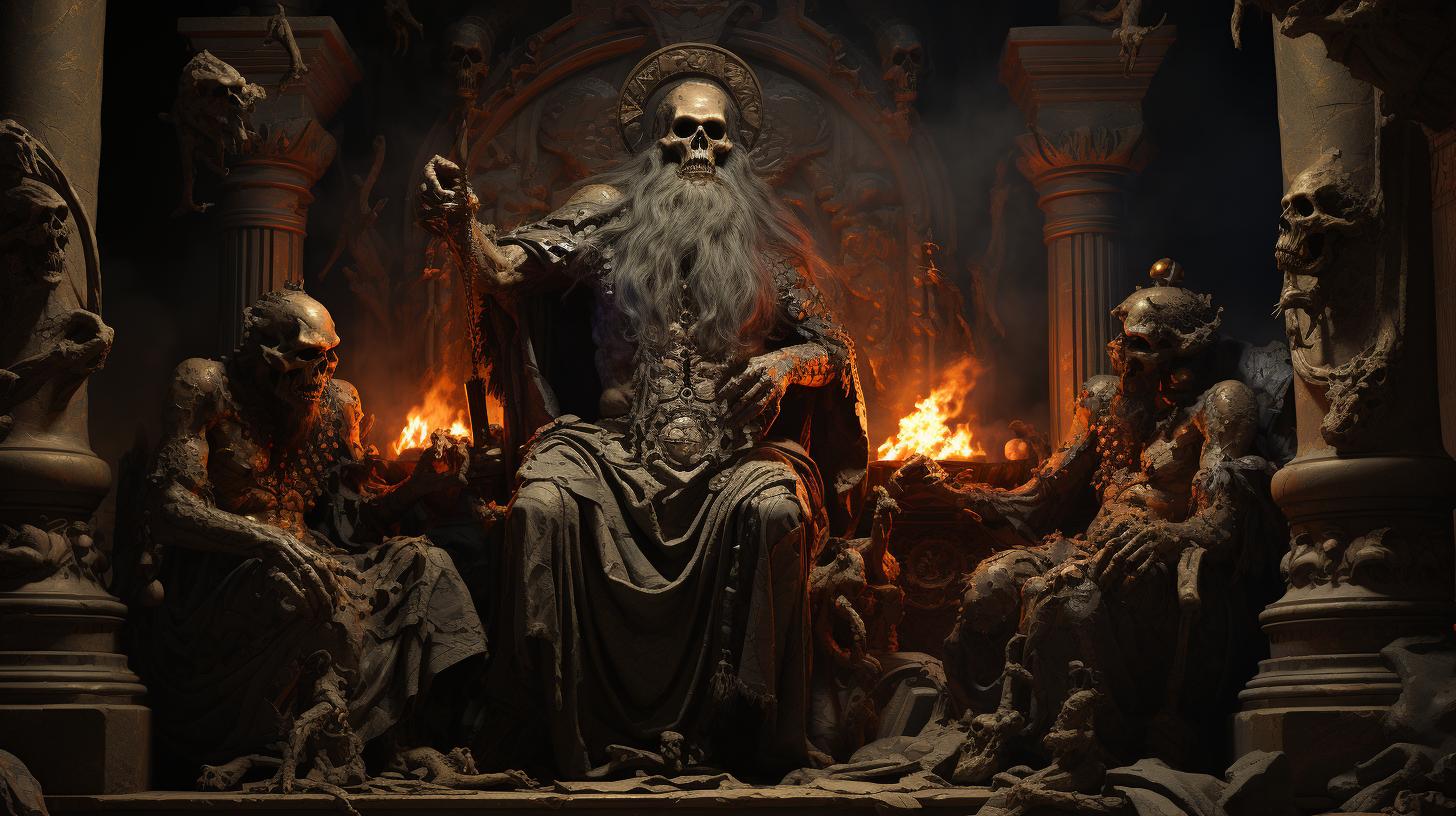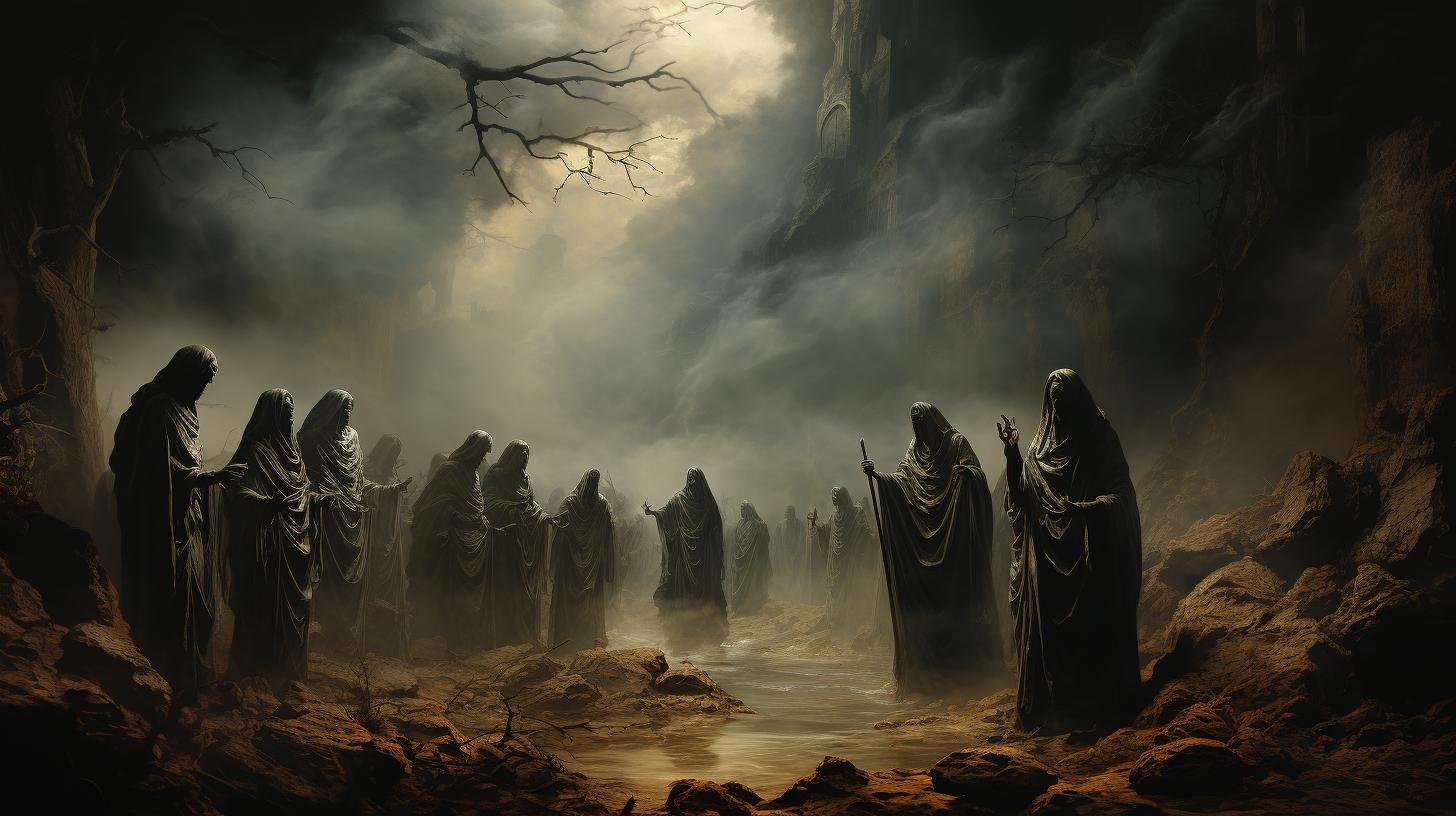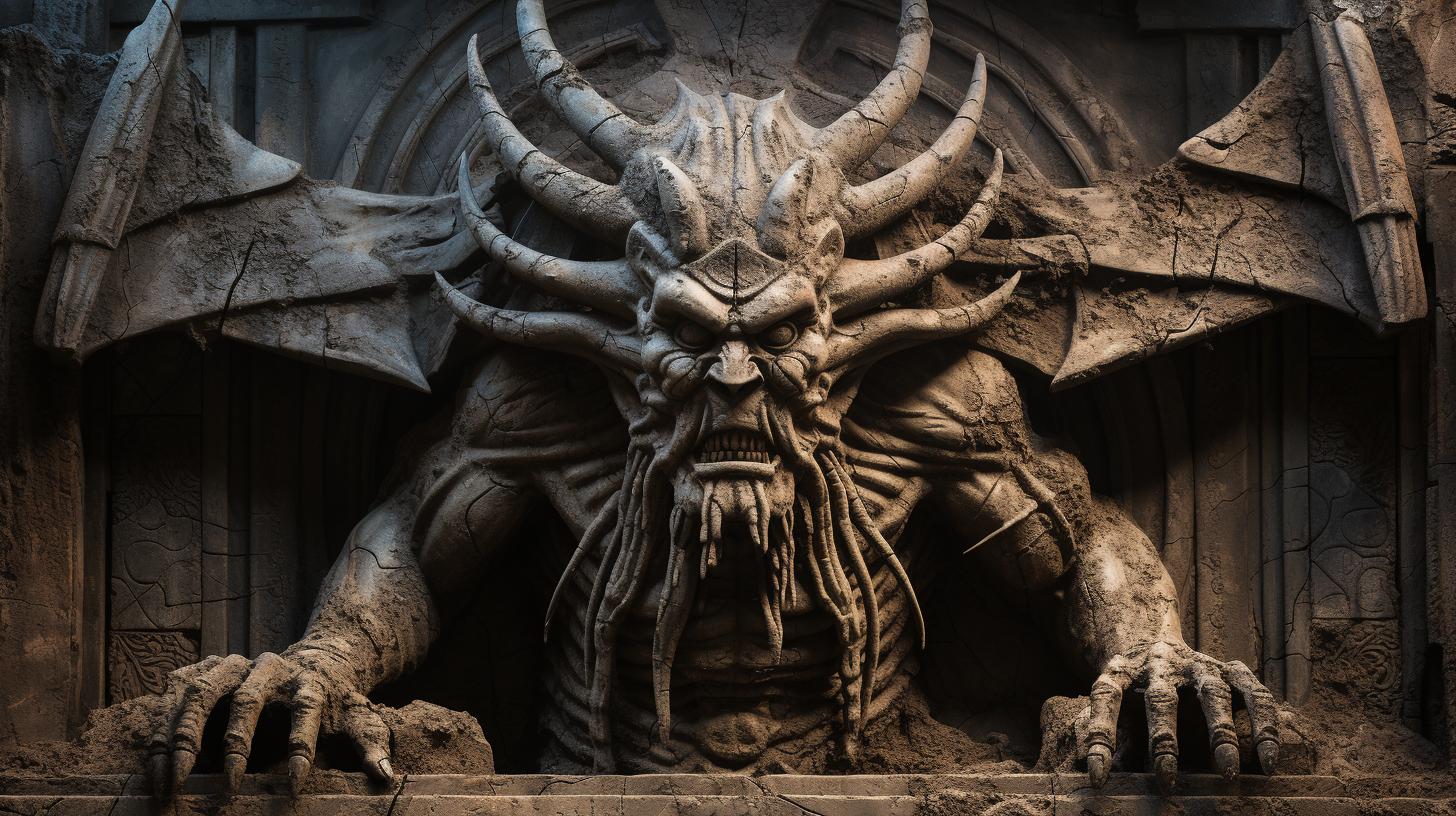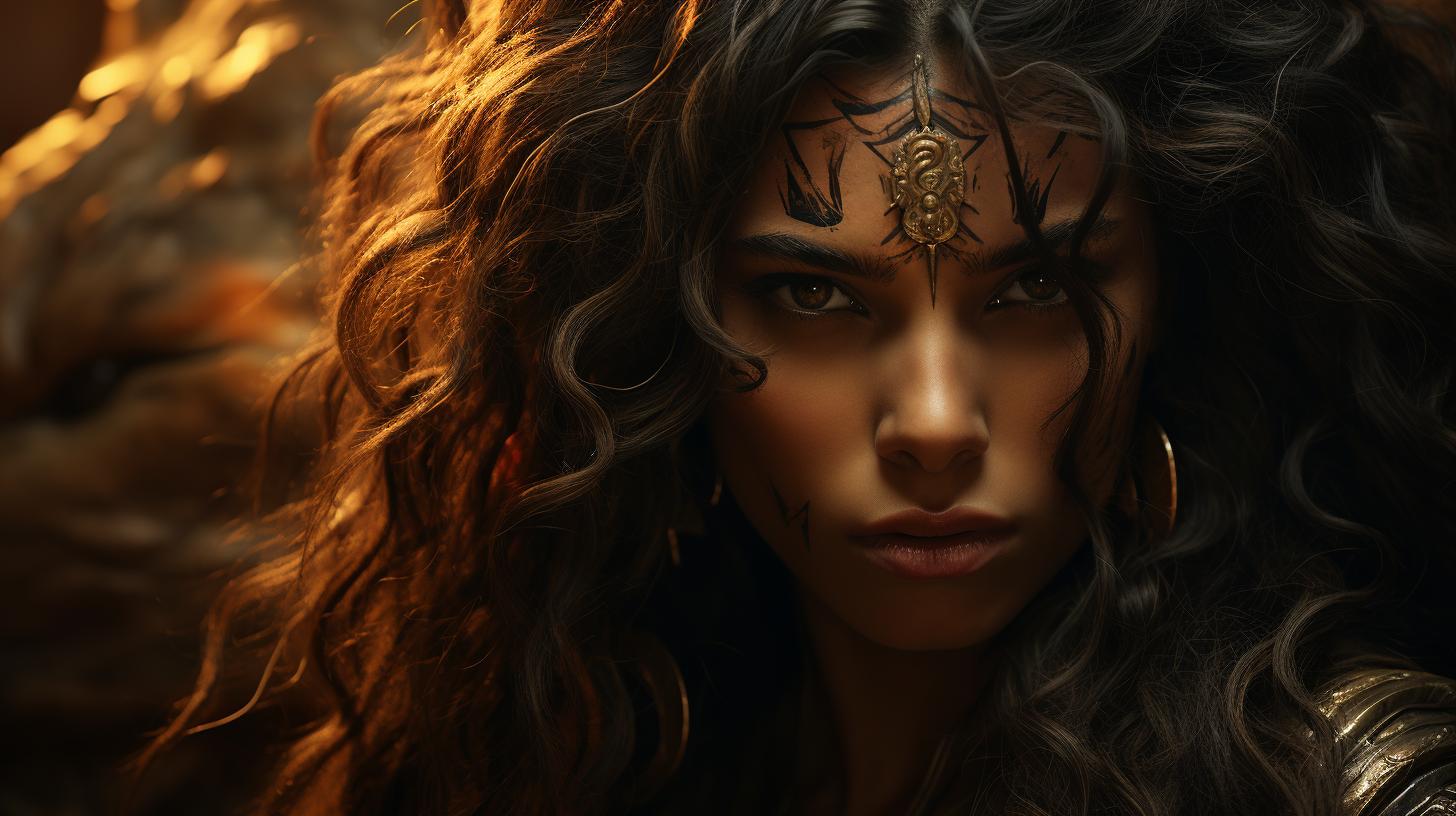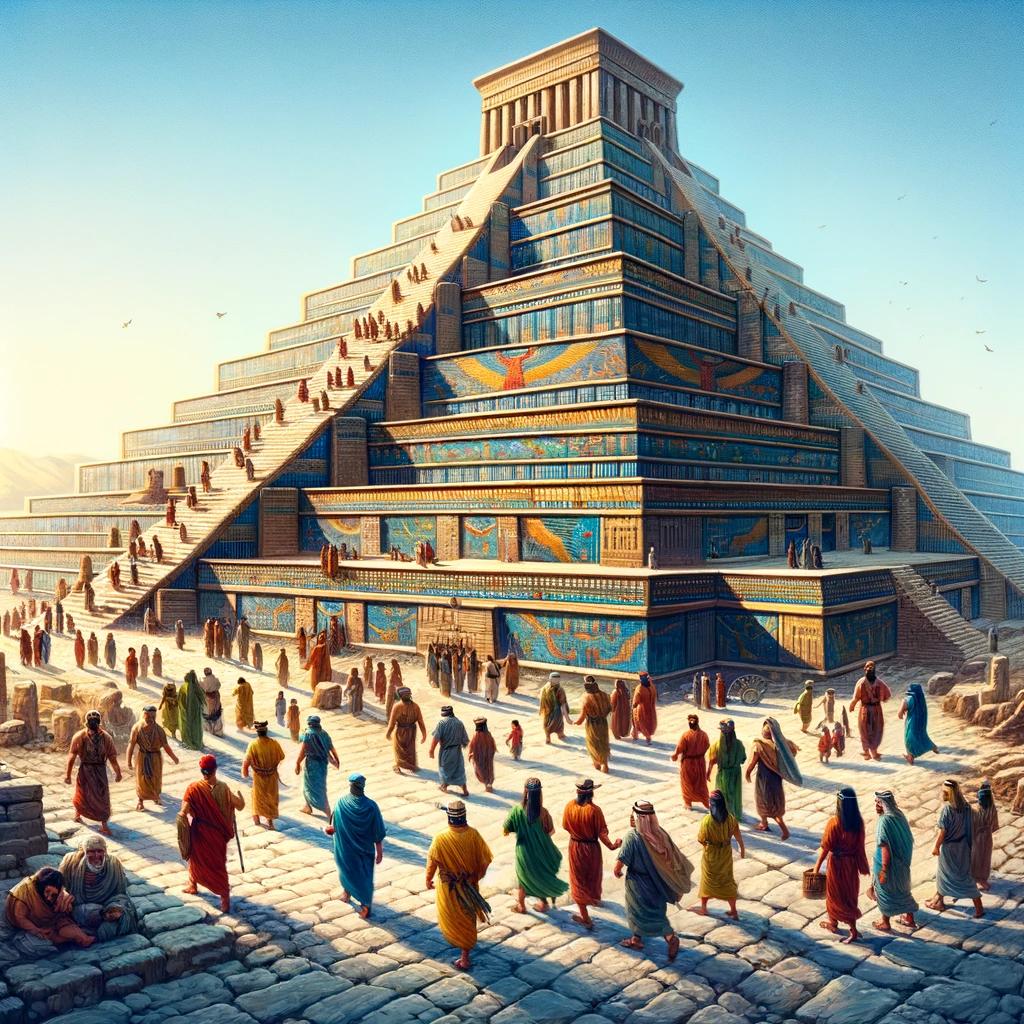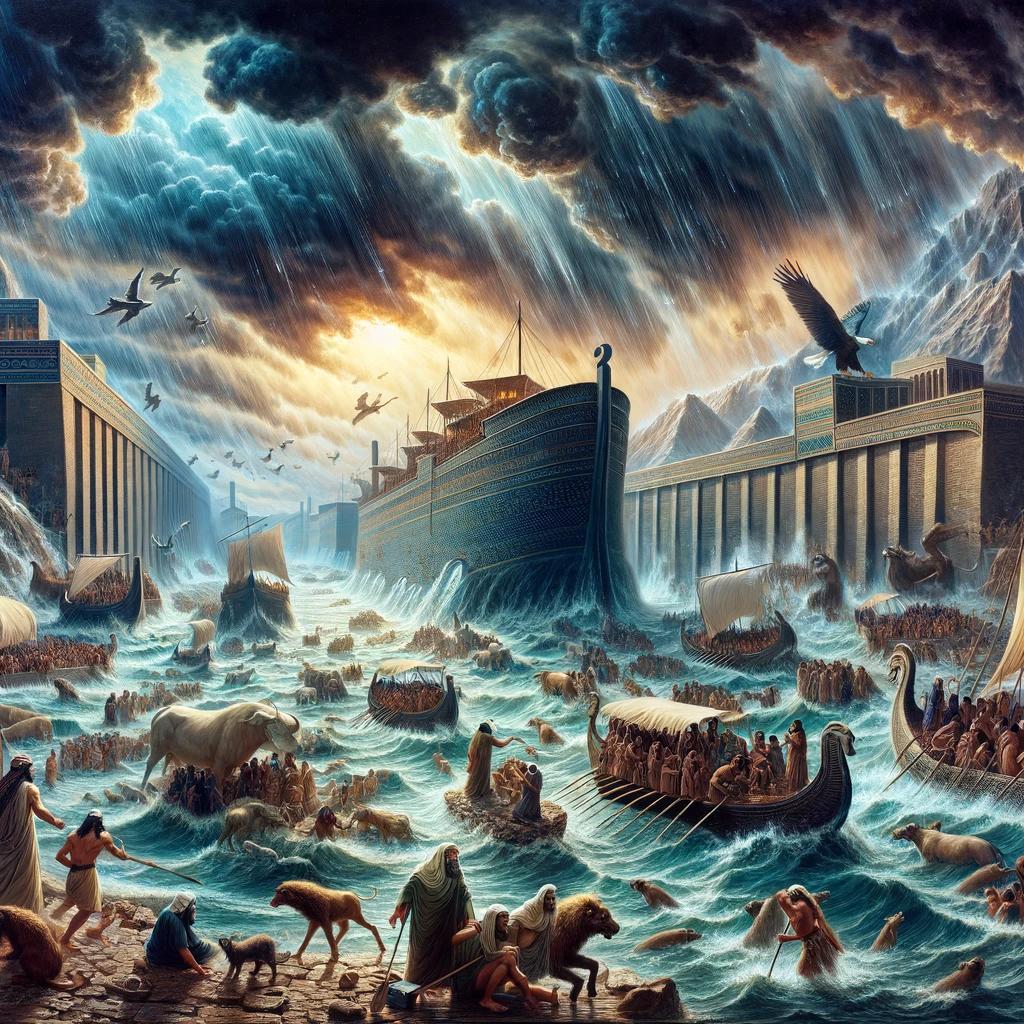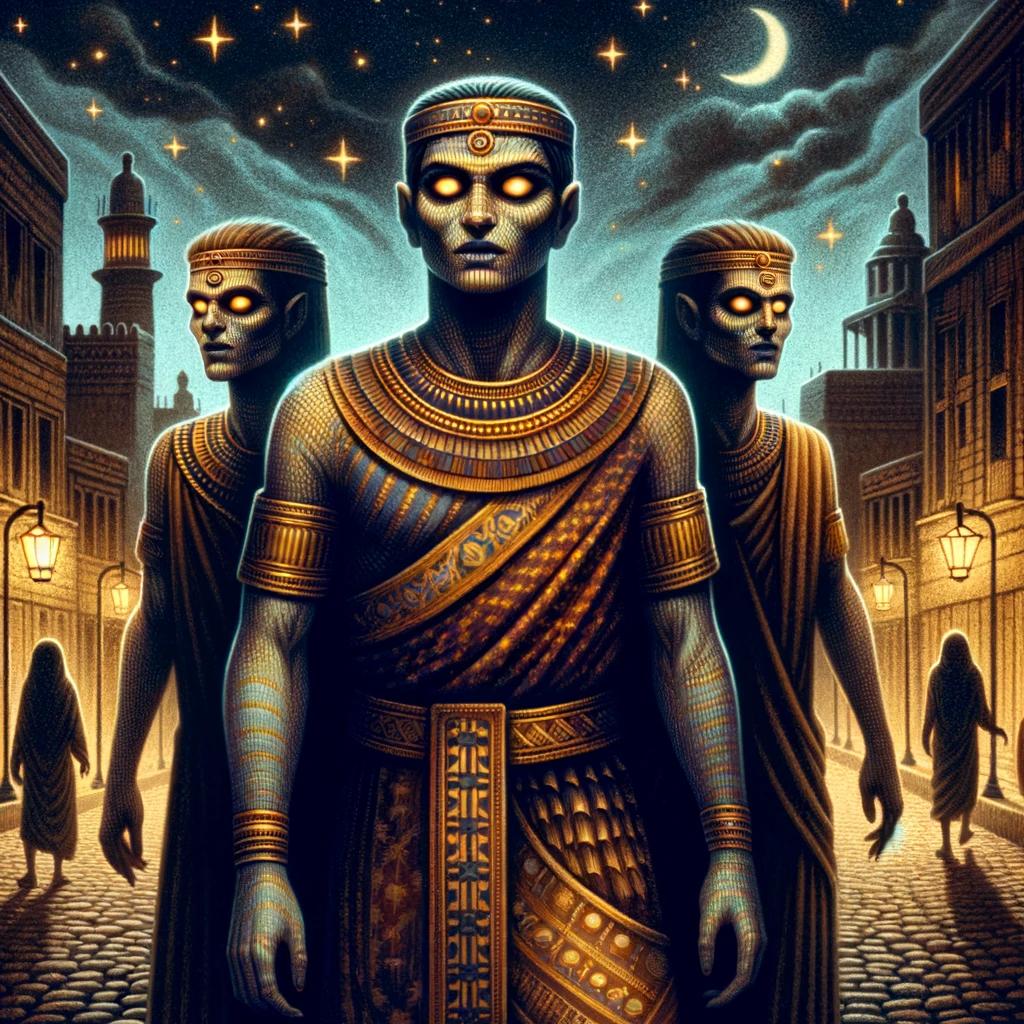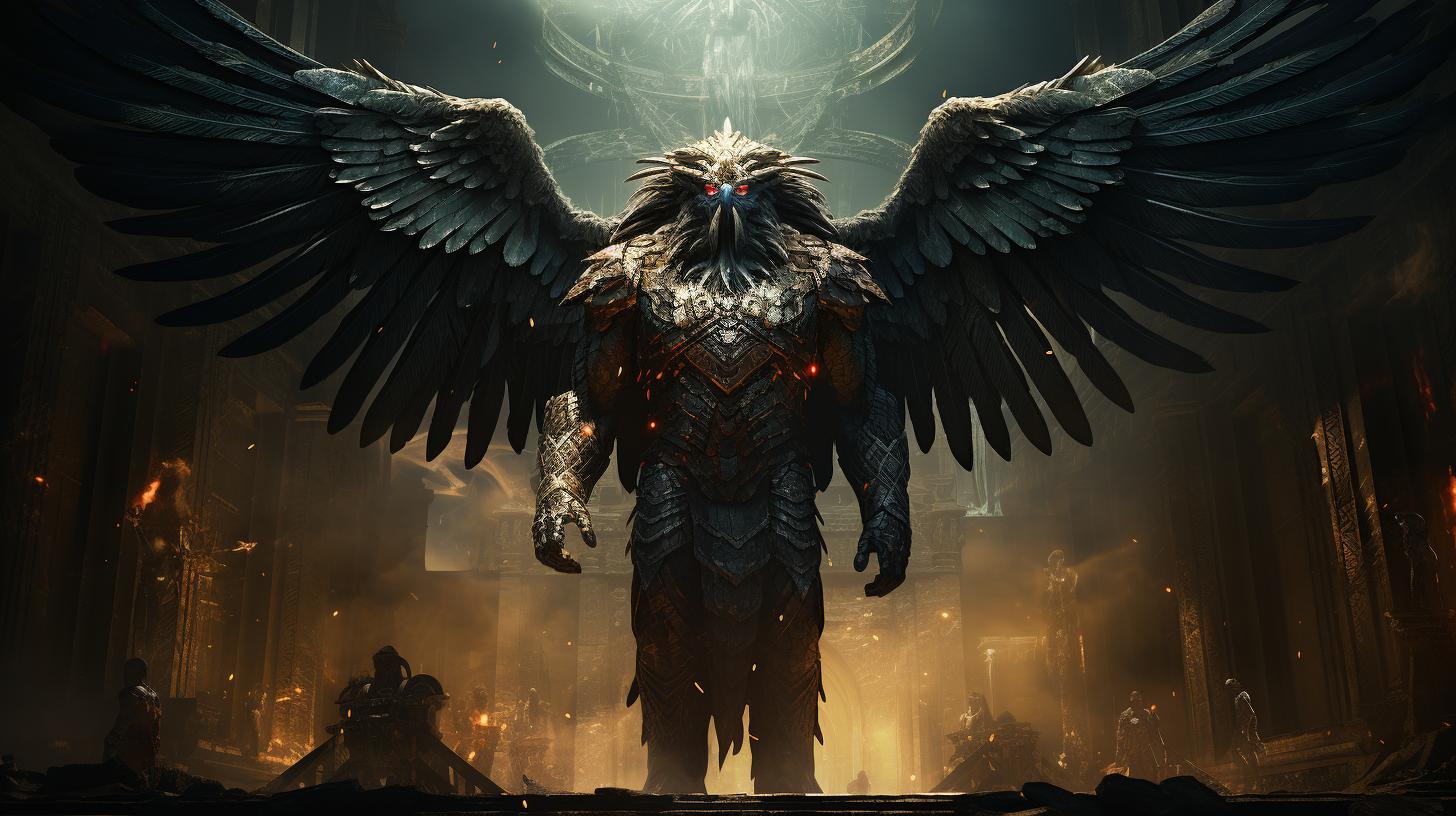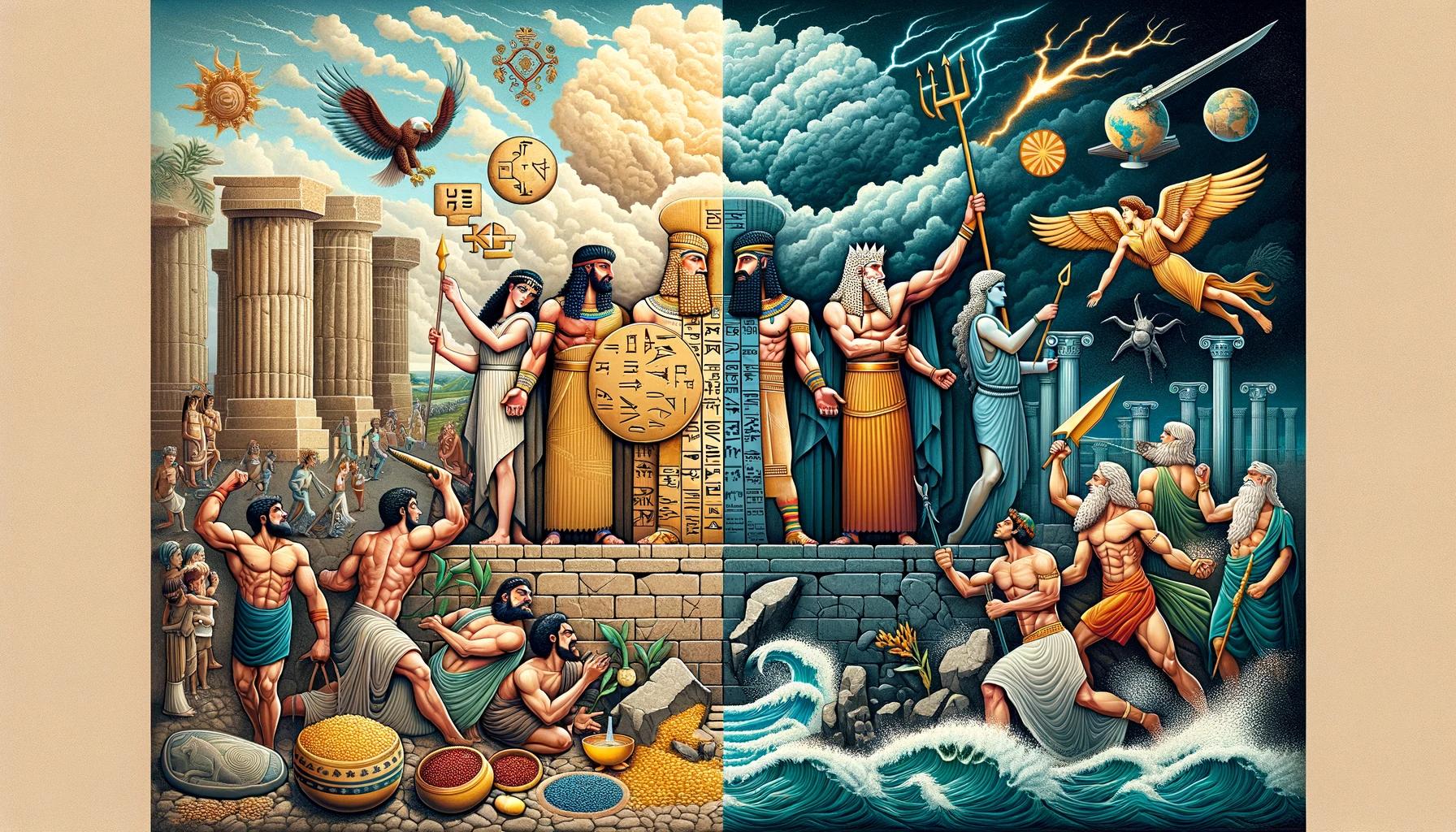1. Ugallu Demon in Mesopotamian Mythology
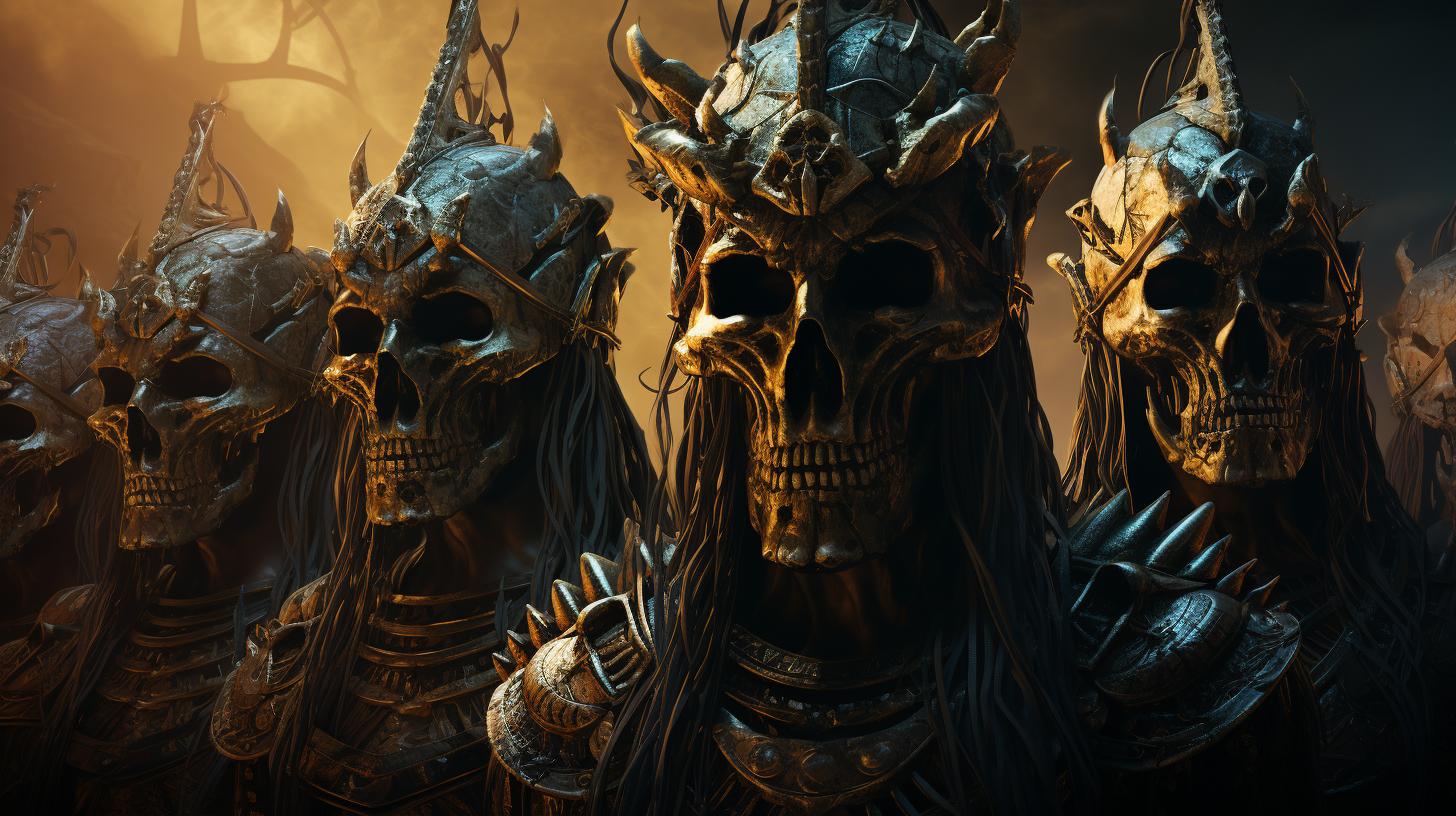
The Ugallu demon is a complex and mysterious deity in Mesopotamian mythology. It was known as a diurnal demon representing divine intervention in human life. With a lion’s head and bird feet, Ugallu appeared in protective figures and amulets during the first millennium BC.
Belonging to Tiamat’s family of storm demons, Ugallu possessed the power to cause havoc and bring diseases and bad weather to the land. This dual nature of being both a protector and a destructive force adds mystery and complexity to the divine figure.
[toc]Ugallu Demon in Mesopotamian Mythology
1.1 Overview of Ugallu Demon
The Ugallu demon holds a significant place in Mesopotamian mythology and is revered for its complex and mysterious nature. With its diurnal nature, it symbolizes the divine intervention in human lives.
This powerful deity is often depicted as a creature with a lion’s head and bird feet, and its representation can be found in protective figures and amulets from the first millennium BCE.
1.2 Roles and Attributes of Ugallu Demon
Being one of the storm demons belonging to Tiamat’s family, the Ugallu demon is both a protector and a force of destruction. Its dual nature adds an air of mystery and complexity to its divine figure.
While it has the ability to bring harm, diseases, and bad weather, it also possesses the power to safeguard and intervene positively in human affairs. Ugallu’s role as a deity reflects the belief in the balance between good and evil in Mesopotamian mythology.
Protective Charm and Amulets
Protective charms and amulets featuring the Ugallu demon played a significant role in ancient Mesopotamian culture. They were believed to possess the power to safeguard individuals from various dangers and bring good fortune.
These talismans were particularly prevalent during the first millennium BCE, appearing in different forms and materials.
The Use of Ugallu Amulets in Ancient Mesopotamia
Ugallu amulets were widely utilized in ancient Mesopotamia for their protective properties. People would wear these amulets as pendants or incorporate them into jewelry, carrying them as a means of warding off evil spirits and ensuring personal security.
It was believed that by wearing an amulet containing the image of the Ugallu demon, one would gain the favor and protection of this powerful deity.
Symbolism and Iconography of Ugallu Amulets
The iconography of Ugallu amulets reflects the complex nature of this deity.
Typically, the amulets depict the lion-headed Ugallu figure with bird feet, highlighting its dual nature as both a ferocious predator and a divine guardian. Additionally, the transformational abilities of Ugallu are depicted, capturing its ability to change appearance from masculine to feminine, old to young.
These details symbolize the diverse aspects of life that Ugallu had the power to influence.
- Amulets served as a physical representation of protection against harm and misfortune.
- Ugallu’s distinct appearance showcased its connection to both the animal and human realms.
- The iconography of Ugallu amulets evolved over time, reflecting different cultural beliefs and artistic styles.
- Ugallu’s transformative abilities represented the dynamic nature of its intervention in human affairs.
The use of protective amulets featuring the Ugallu demon highlights the Mesopotamians’ belief in supernatural aids for personal safety and well-being.
By carrying these amulets, individuals sought to harness the power and influence of Ugallu in their daily lives, ensuring protection against malevolent forces.
Ugallu Demon and the Deities
Ugallu, as part of the family of storm demons, held a special relationship with Tiamat, the mother goddess in Mesopotamian mythology. He was considered one of her demon children, tasked with carrying out her will and bringing both chaos and protection to the world.
Alongside other demons, Ugallu played a significant role in the divine hierarchy, acting as intermediaries between gods and humans.
The Intervention of Ugallu in Human Life
Ugallu’s presence in the lives of humans was believed to be profound. He personified the divine intervention in human affairs, both for better or worse. At times, Ugallu was seen as a protector, warding off evil forces and bringing good fortune.
However, his dual nature meant that he could also bring havoc, disease, and adverse weather to the land. His interventions, whether benevolent or destructive, were seen as an expression of the delicate balance between good and evil in Mesopotamian mythology.
The appearance of Ugallu in protective figures and amulets highlights the belief in his power to shield individuals from harm and provide divine assistance in times of need.
Transformation and Characteristics of Ugallu
The Ugallu demon possesses fascinating transformation abilities and unique characteristics that contribute to its complexity in Mesopotamian mythology.
Ugallu’s Shape-shifting Abilities and Appearance
Ugallu exhibits the remarkable power to shift its physical form, altering its gender and age. In its female form, its unruly white hair conceals rays of light, adding to its enigmatic aura.
Over time, its iconography evolved, and its feet transformed into eagle-like claws, while its attire changed to a short skirt.
The Dual Nature of Ugallu: Benevolent Protector and Destructive Force
Ugallu’s dualistic nature embodies both protection and destruction, depending on the context and tasks designated by the gods. This duality reflects the belief in the balance between good and evil within Mesopotamian mythology.
While Ugallu was renowned as a benevolent protector, capable of saving individuals and guarding against adversaries, it also possessed the potential to wreak havoc, spread diseases, and unleash adverse weather conditions upon the earth.
These contrasting qualities make Ugallu a captivating and complex deity in the mythological landscape of ancient Mesopotamia.
Mythological Conflict and Transformation
The Battle between Ugallu and Marduk
In the rich tapestry of Mesopotamian mythology, the conflict between Ugallu and Marduk is one of great significance. These two powerful beings clashed in an epic battle, showcasing the struggle between order and chaos, good and evil.
Marduk, the great champion of the gods, ultimately emerged victorious, capturing Ugallu and other monstrous creatures. Instead of destroying them, Marduk harnessed their power, transforming them into protective forces.
This clash symbolizes the triumph of divine power over malevolence.
Transformation of Ugallu into a Protective Presence
Ugallu, once a destructive force, underwent a remarkable transformation at the hands of Marduk. Bound by strong ropes, Ugallu and the other captured monsters were tamed by Marduk, forever changing their purpose and nature.
No longer agents of chaos and harm, Ugallu became a guardian presence, capable of warding off threats and bestowing protection. The metamorphosis of Ugallu represents the potential for redemption and the complexities within divine beings.
Popular Worship and Rituals
The worship of Ugallu was highly revered among the ancient Babylonians, who regarded the demon as a powerful and enigmatic deity. The cult of Ugallu thrived during this time, with devotees engaging in rituals and ceremonies to honor and seek the protection of the demon.
Rituals and Offerings in Honor of Ugallu
Rituals dedicated to Ugallu involved various practices aimed at appeasing and gaining favor from the deity. Offerings were made to express devotion and gratitude, often consisting of food, incense, and precious objects.
These offerings were presented in temples or at specific sacred sites associated with Ugallu.
- Priests and Priestesses: Highly esteemed individuals known as priests and priestesses were responsible for leading the religious rituals dedicated to Ugallu.
They performed sacred rites, chanted prayers, and offered sacrifices on behalf of the worshippers.
- Prayer and Invocation: Worshippers would offer prayers and invoke the name of Ugallu, seeking protection, guidance, and blessings.
These invocations were believed to establish a connection between the mortal world and the divine realm.
- Sacrificial Offerings: Sacrifices played a significant role in the rituals associated with Ugallu. Animals, such as lambs or goats, were often offered as sacrifices.
The act of sacrifice symbolized the worshippers’ dedication and willingness to give up something of value to show their devotion to Ugallu.
- Processions and Festivals: Festivals and processions were organized periodically to honor Ugallu.
These events showcased the magnificence of the deity and served as communal celebrations, where believers came together to express their collective adoration and appreciation for Ugallu.
The rituals and offerings performed in honor of Ugallu were deeply ingrained in the Babylonian society, representing a strong belief in the power and benevolence of the demon.
The cult of Ugallu served as a means for individuals to seek protection, guidance, and favor from this complex and mysterious Mesopotamian deity.
Decline and Shift in Beliefs
Influence of Islamic Expansion on the Worship of Ugallu
The rise and spread of Islam had a significant impact on the worship of Ugallu in Mesopotamia. As Islamic beliefs and practices gained prominence, the worship of hibrid deities like Ugallu began to wane.
The monotheistic nature of Islam, emphasizing the worship of Allah, led to the rejection of other powerful entities and their creations. Consequently, the popularity of Ugallu as a divine figure diminished as it was deemed blasphemous to believe in entities beyond Allah.
Emergence of Other Mythological Creatures and the Eclipse of Ugallu
In addition to the religious shift brought by Islamic expansion, the emergence and popularity of other mythological creatures further contributed to the eclipse of Ugallu. One such creature was the Manticore, a similar but more malevolent being in Persian or Iranian mythology.
As beliefs and influences from neighboring regions gained traction, the attention and reverence towards Ugallu diminished, as these new mythological creatures became the focus of worship and fascination.
In conclusion, the worship of Ugallu faced a decline and shift in beliefs due to the influence of Islamic expansion and the emergence of other mythological creatures.
The rise of Islam led to the rejection of deities beyond Allah, diminishing the popularity of Ugallu as a powerful entity. Furthermore, the emergence of captivating mythological creatures like the Manticore eclipsed the attention and devotion once given to Ugallu in Mesopotamian mythology.
.











